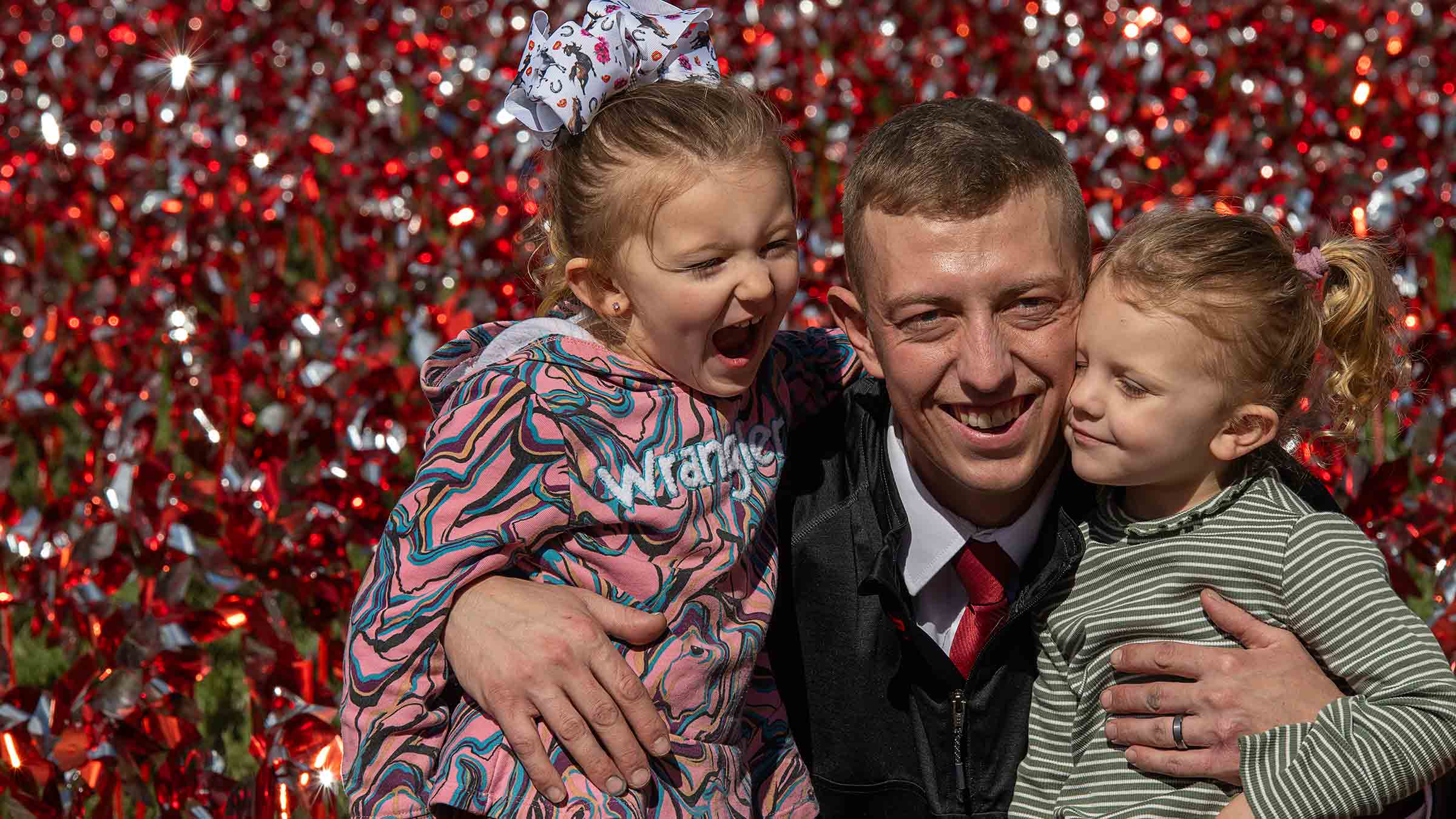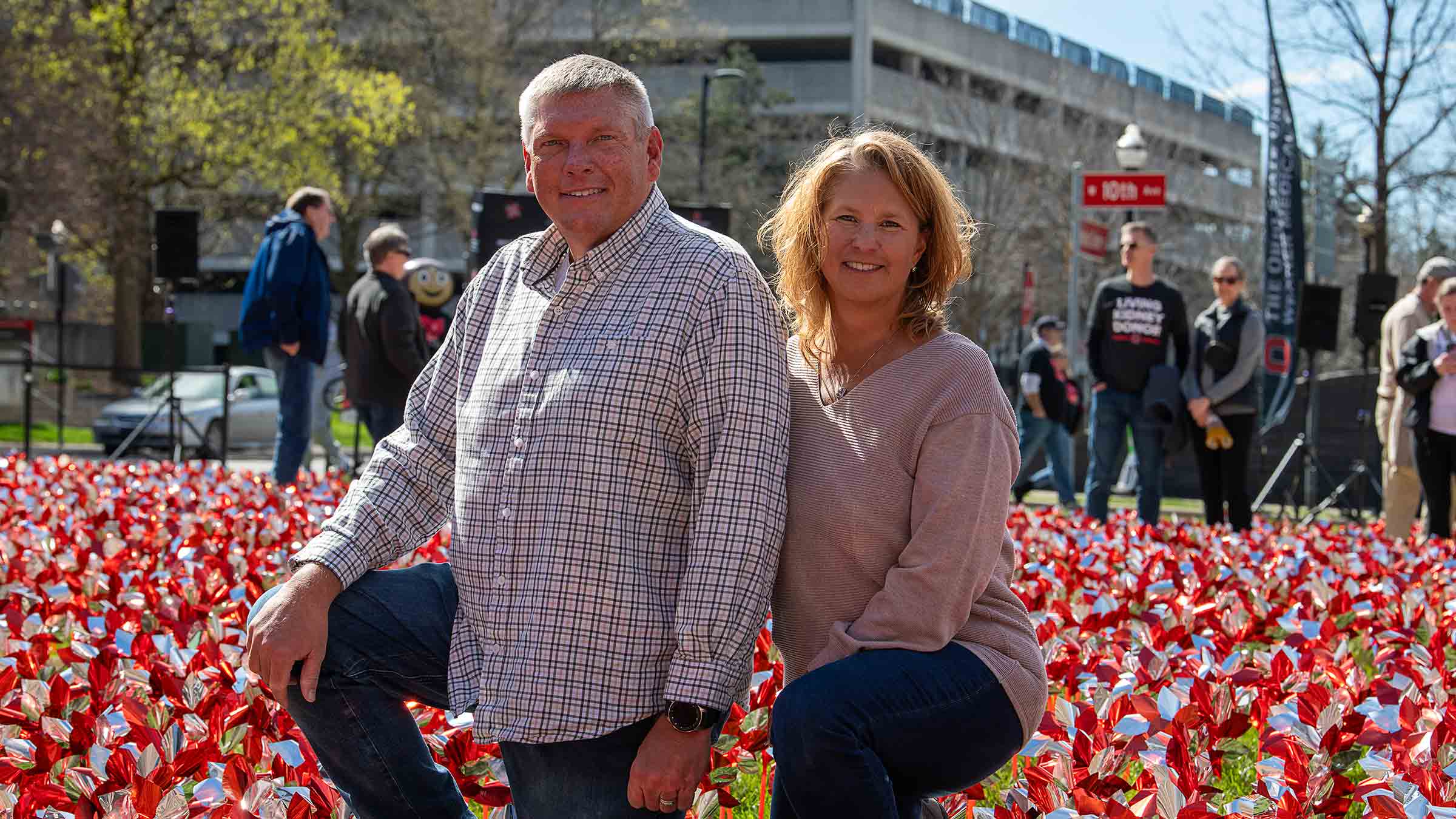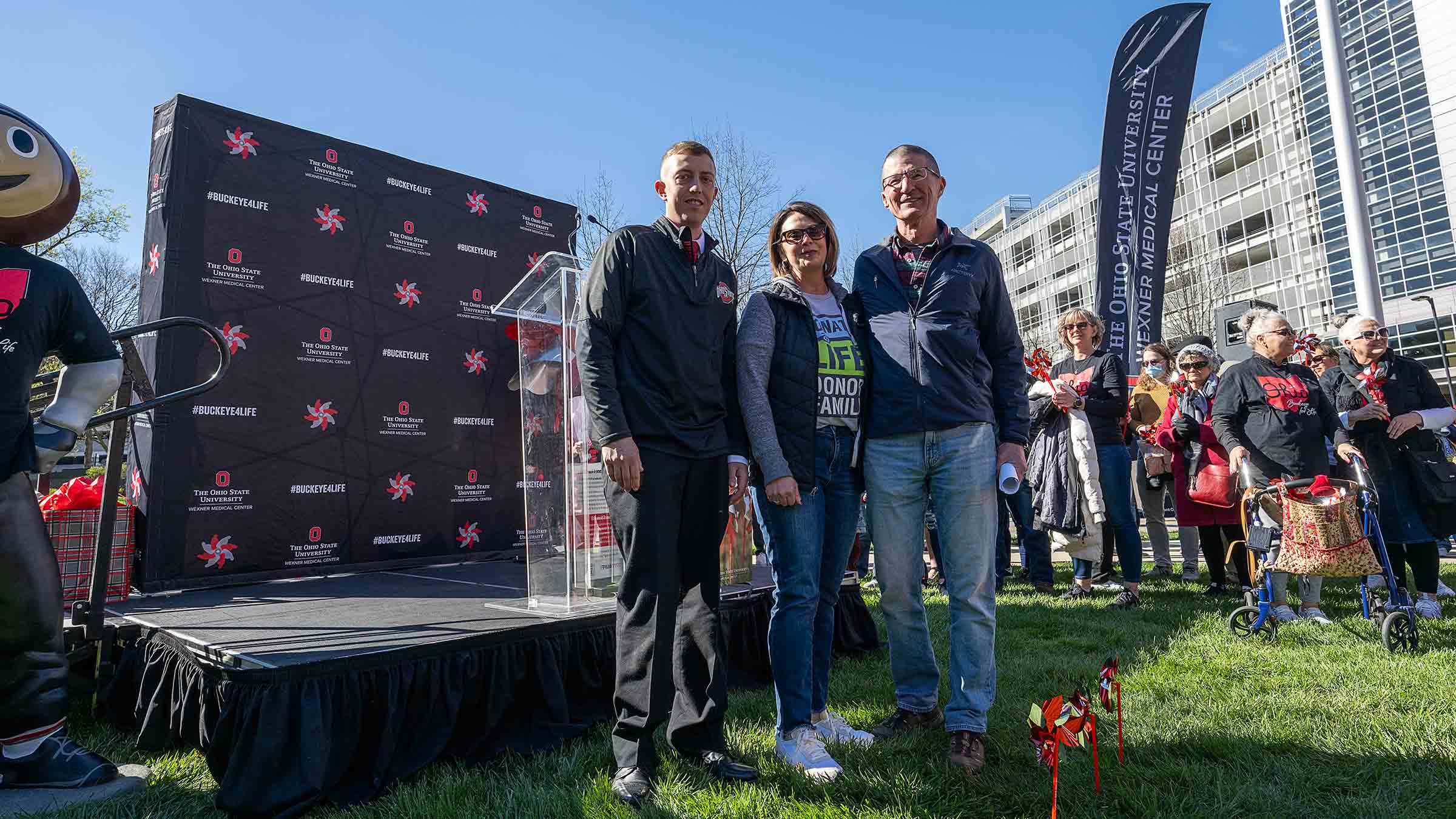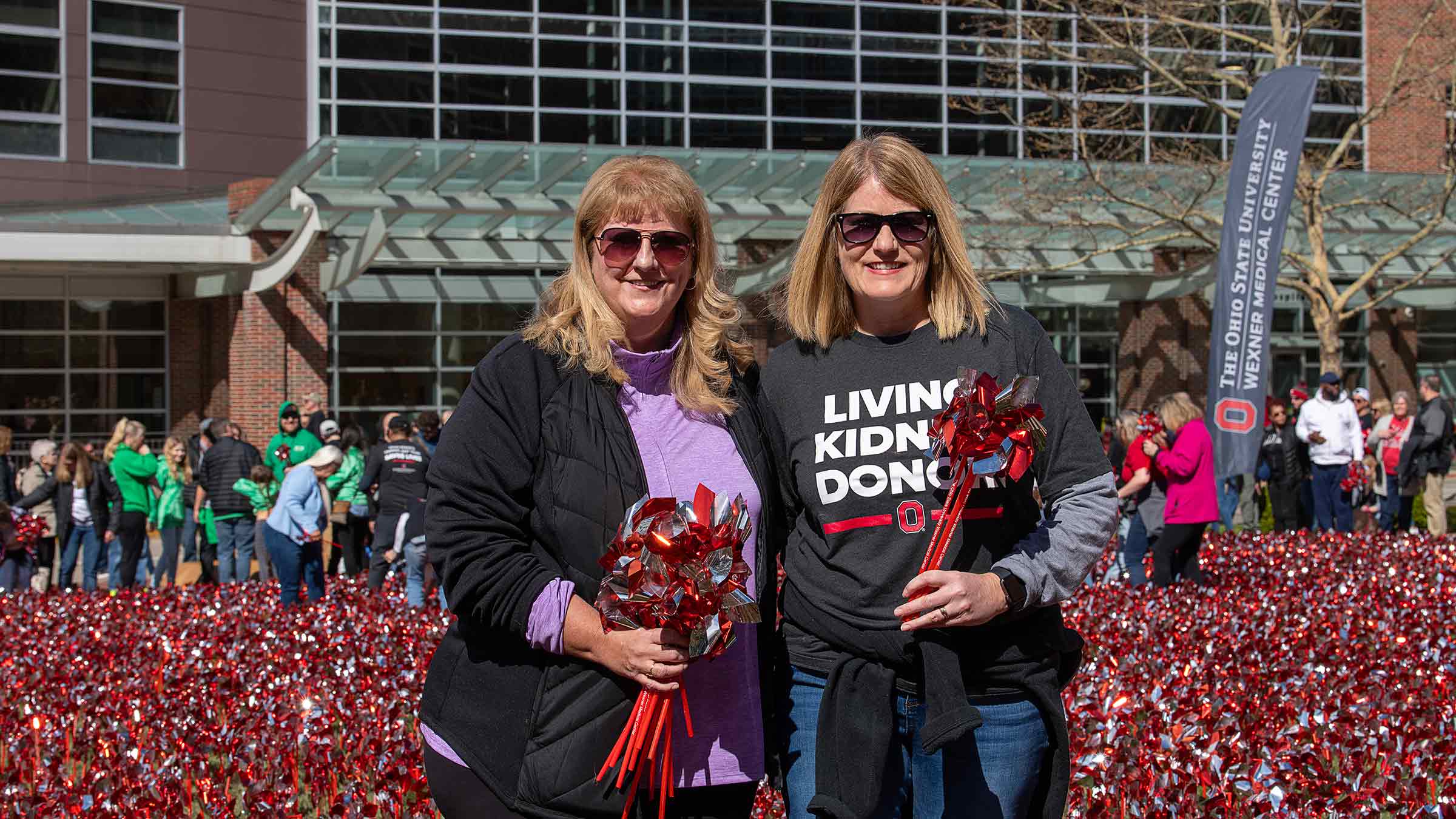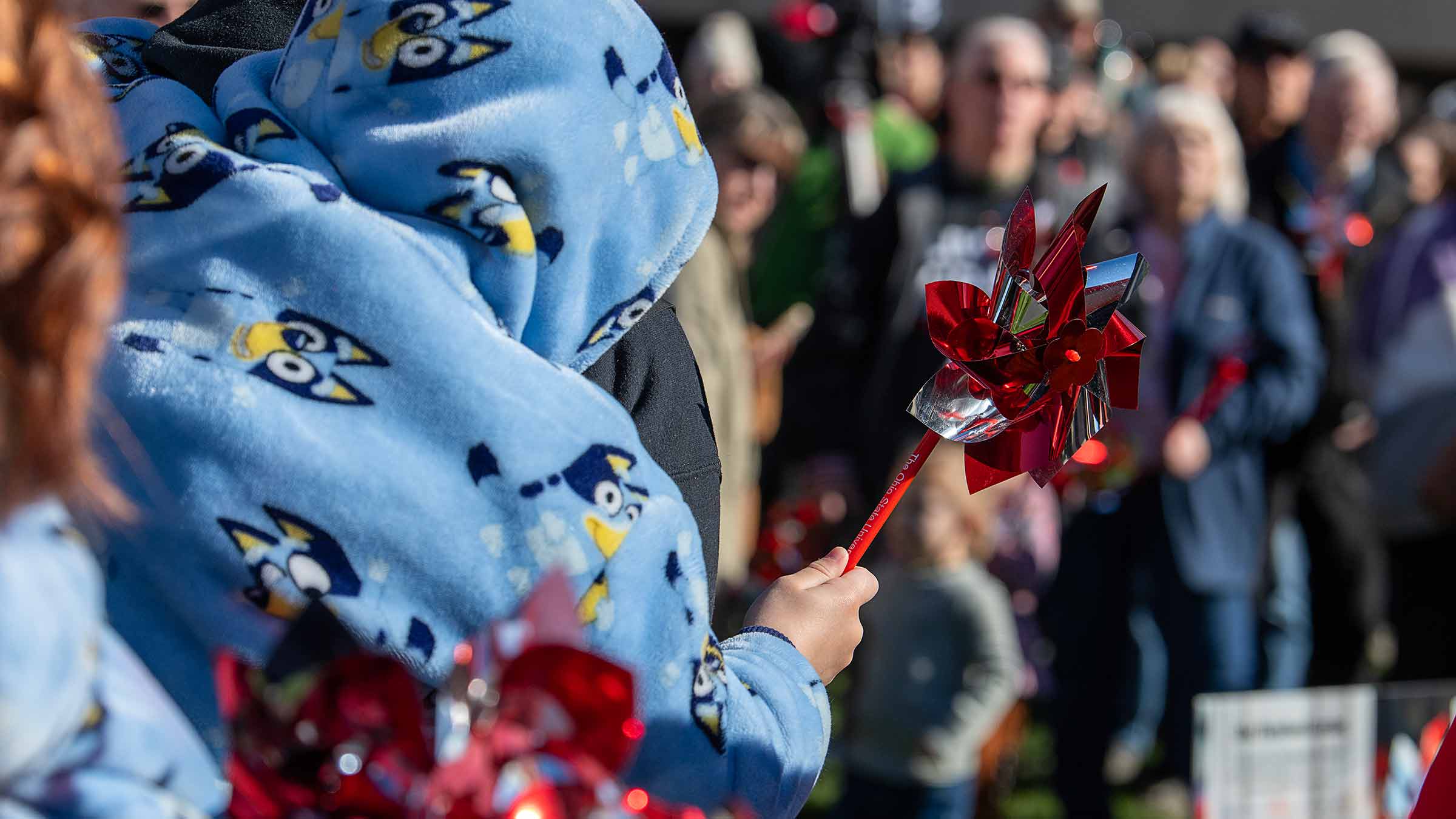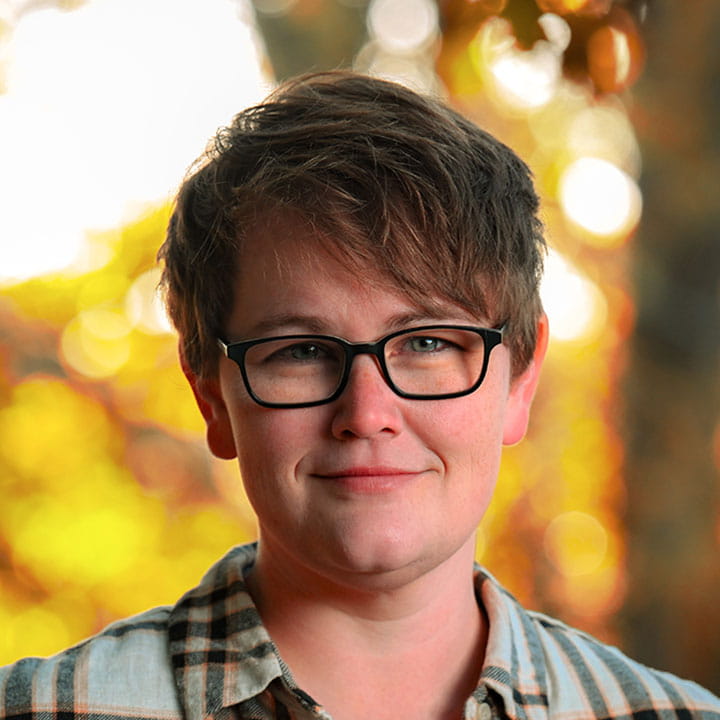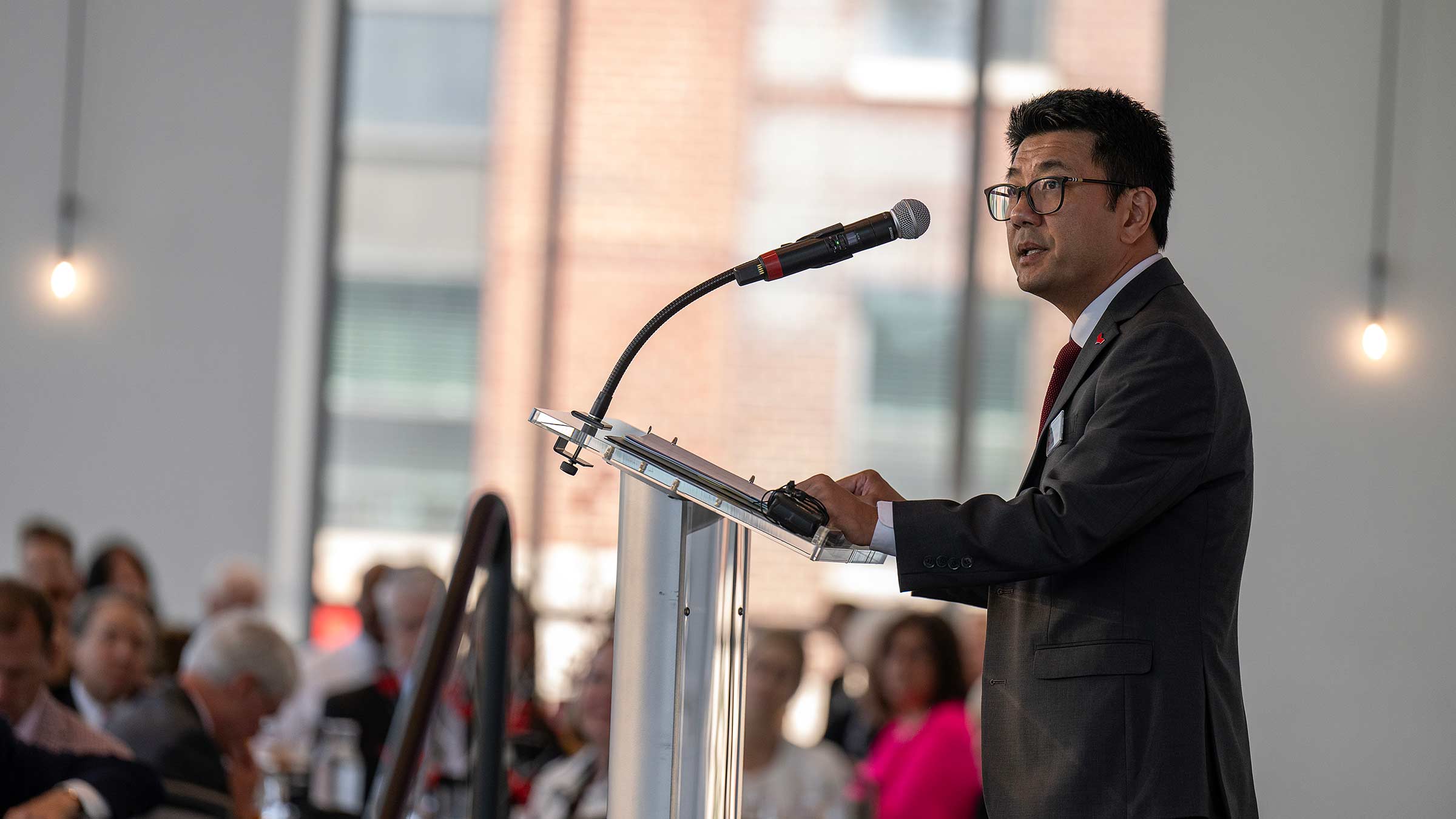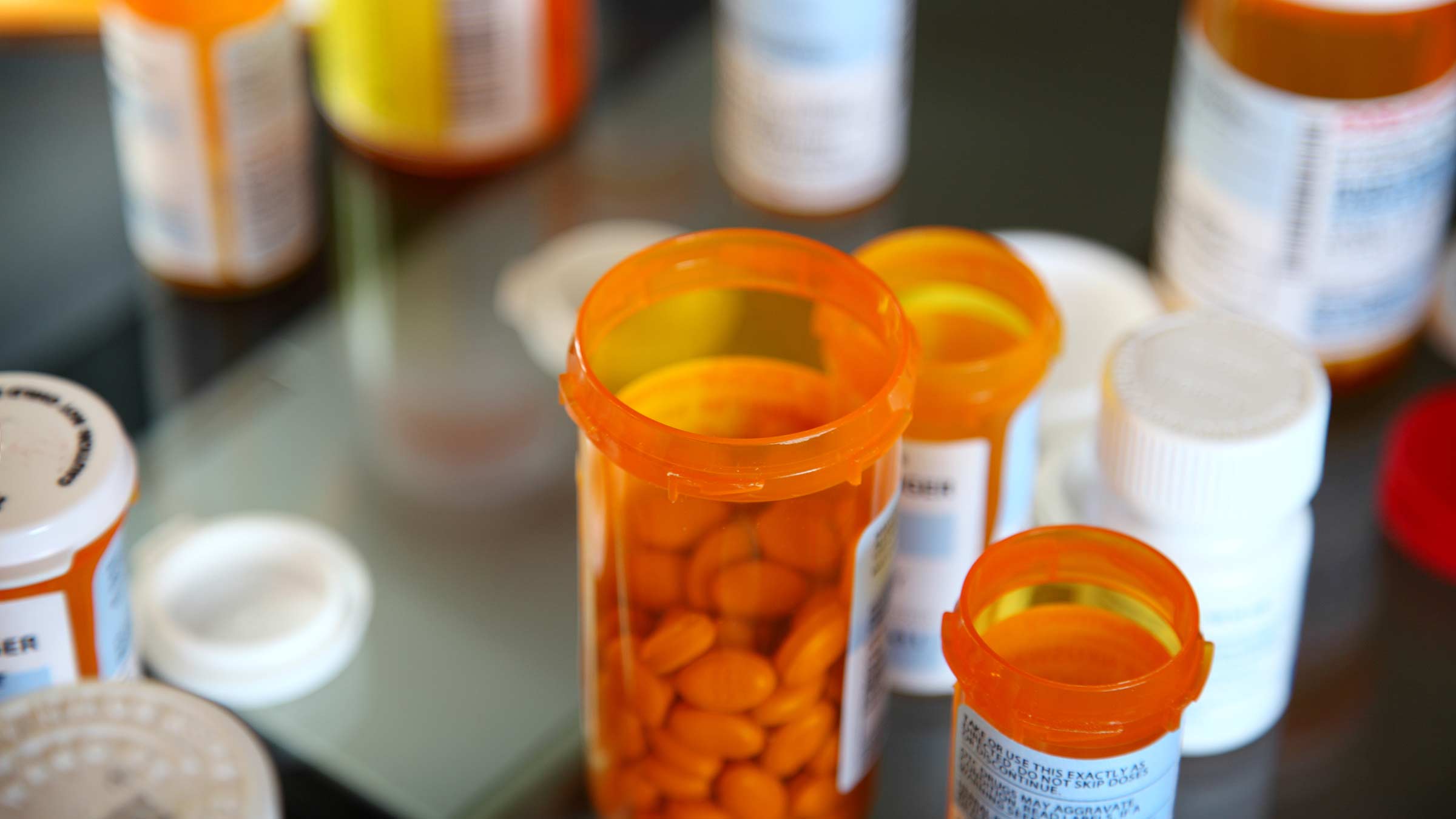How Ohio State celebrates organ transplants as ‘Buckeyes for Life’
The annual Buckeye Pinwheel Planting and Transplant Reunion uniquely honors organ donors and transplant recipients.
At Ohio State, It's as sure a sign of Spring as birdsong and daffodils: a sea of 12,500 pinwheels on the grassy plaza of The Ohio State University Wexner Medical Center.
These pinwheels also represent renewed life — the more than 12,500 transplants performed at Ohio State since its first kidney transplantation in 1967.
Started in 2008, the annual Buckeye Pinwheel Planting and Transplant Reunion gathers transplant recipients, living organ donors, donor families, medical teams and volunteers in a ceremony that, for some, marks another year of life made possible by Ohio State’s Comprehensive Transplant Center, organ donors and their families. Nearly 3,000 people registered to attend this year.
As part of the festivities, participants plant pinwheels in front of University Hospital and the Richard M. Ross Heart Hospital.
“Seeing the pinwheels every year makes me thankful for the transplant team who helped me get my heart eight years ago and continue to help patients just like me,” said Scott Griffith, whose heart transplant allowed him to return to being extremely active, including as a ski patroller.
Why pinwheels
Each pinwheel has one stem with eight spokes, representing the power of one person to save up to eight lives through organ donation and transplantation. The spinning of the pinwheel symbolizes the continual “paying it forward” of organ donation, perpetually driving the circle of life.
Looking out from nearby hospital rooms, the pinwheels are a twinkling sea of shiny scarlet and gray throughout April.
In 2008, the Ohio State Wexner Medical Center’s marketing team worked with local organ procurement organization Lifeline of Ohio to create a visual display expressing the magnitude of transplantation and the gratitude for organ donation. The inaugural pinwheel garden featured 6,400 pinwheels placed with the help of about 30 volunteers. The bright, symbolic visual has stuck — and grown by thousands — even being adopted in 2017 by Donate Life America for its national marketing campaign.
Ohio State is advancing organ transplantation in Ohio and beyond
“The Ohio State Wexner Medical Center consistently ranks among the top 20 transplant centers by volume in the United States, currently ranking No. 11 this month — all made possible by selfless acts of donation,” says Kenneth Washburn, MD, director of the Comprehensive Transplant Center at the Ohio State Wexner Medical Center.
Dr. Washburn welcomed the crowd Sunday morning, reminding them of the strides Ohio State continues to make in increasing safety and accessibility of organ donation and transplantation.
The list of recent accomplishments at Ohio State include:
- A record 2023 for lifesaving liver transplants, in which 184 liver transplants were performed
- Over $16 million in active research grant funding, along with 11 clinical trials to investigate ways to improve transplantation and make procedures safer for recipients
- Our lung transplant program achieving its 600th transplant milestone after re-initiating the program in 2013
- In March 2024, performing a large living kidney donor chain of 10 patients — five living donors and five kidney recipients
- Our heart transplant program performing several combined organ transplants, including heart-livers, heart-lungs and heart-kidneys. We recently performed Ohio State’s first heart transplant to an HIV-positive recipient and the first two transplants of hearts from donation after circulatory death (DCD) donors.
- Our 100th case using the OrganOx metra liver perfusion system, which helps grow the available pool of donor livers. This is an addition to the ex vivo organ perfusion pumps we already have in place for hearts, lungs and kidneys.

“Our mission to save lives is growing exponentially, just like our pinwheel garden.”
At this moment, nearly 103,000 people in the United States are waiting for an organ transplant. Nearly 2,500 of those are in Ohio.
Dr. Washburn said that "the ripple effect of one person saying ‘yes’ to donation is powerful."
“That powerful decision is felt by recipients, family members, friends, colleagues and so many more.”





